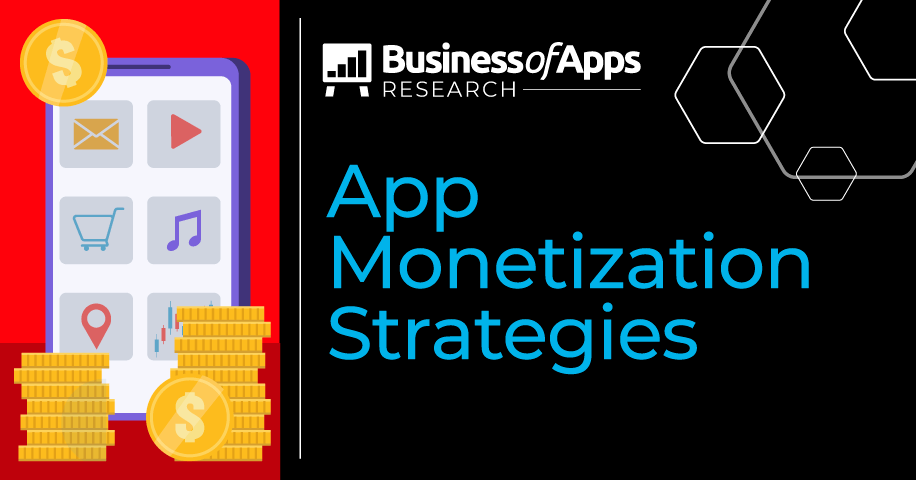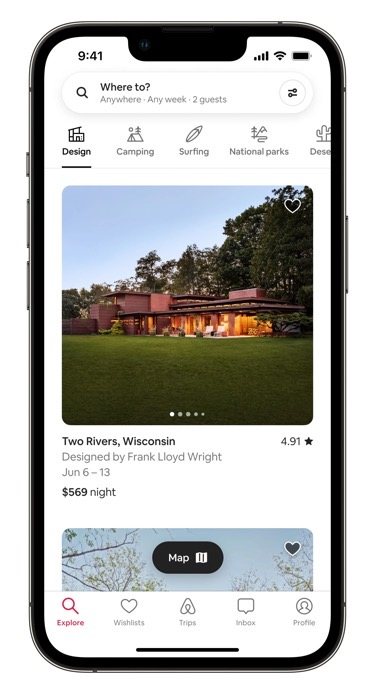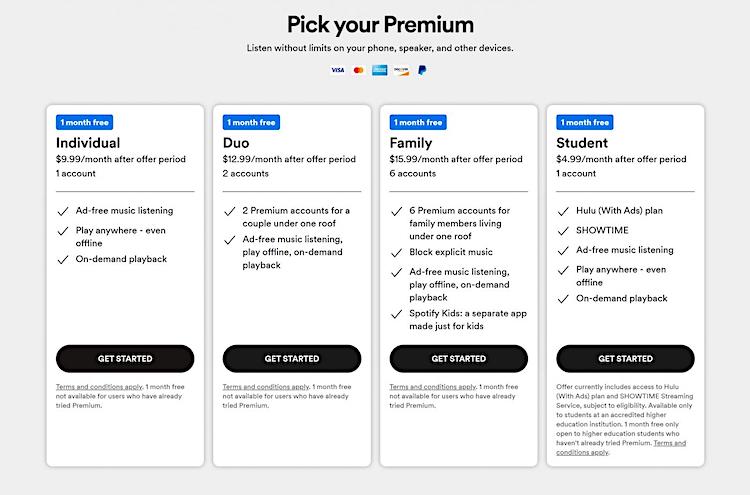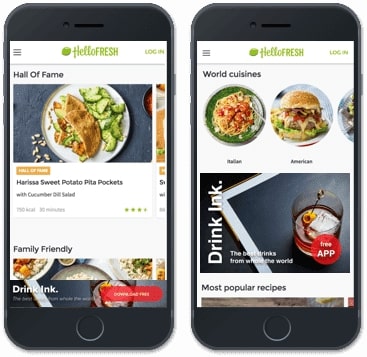
The choice of app monetization strategy is equally important as choices made for the app’s design and coding. A mobile app may have an impenetrable user interface, no bugs to ruin the app’s user experience, and yet generate very low or zero revenue. The app monetization strategy does matter. No mobile app project may last indefinitely running on venture capital, a certain portion of the revenue it generates should feed its growth and over time become its primary source of growth and development.
Having said that, let us review the major strategies applied to millions of both iOS and Android apps.
HQ user experience
The app monetization strategy that should be in every app brand’s playbook and quite often is overlooked – building an app that delivers a superb user experience. It sounds obvious but, in so many cases, is not on the radar of a mobile app development team. Regardless of what business model is chosen to monetize the app, meeting its users’ expectations is paramount.
Ensuring a high-quality mobile app user experience includes an intuitive and polished interface, a good onboarding experience, robust customer support, and a consistent updates release roadmap. If one of these components is missing, the whole app user’s perception of the app is likely to collapse and therefore the app’s potential to generate revenue.
Featured App Monetization Companies
Pros
- Creating a mobile app that provides a high-quality user experience is one of the best ways to retain the app users, help it grow, and actually decrease expenses on user acquisition.
Cons
- On the flip side, it’s one of the toughest app monetization strategies because one can only seek to create such a user experience, there is no single recipe to follow to build one in a short term.
One of the apps that represent the golden standard of delivering a high-quality user experience is Airbnb, the online marketplace for short-term homestays and experiences.
Airbnb iOS app interface
Source: Airbnb
The team behind the Airbnb app has been investing a lot into making sure all features of the app are intuitive, the user interface is enticing but not in the way of the app’s users.
Airbnb’s onboarding process is well thought-through to introduce the app at glance and make sure there is no friction for the app users to enjoy the app.
Next up on our list of app monetization strategies is the Freemium model, one of the oldest for the mobile app ecosystem.
App Revenue Buyer's Guide
Download the App Revenue Buyer’s Guide today and start shaping the future of your app! Your journey towards app monetization mastery begins now.
Freemium model
The freemium model is based on the principle of providing the app’s copy for free with a limited basic set of functions. All additional, more advanced features can be purchased inside the app for a small fee, ranging from $0.99 to a hundred dollars or more (when it comes to purchasing apps’ annual subscriptions).
The appeal of this strategy lies in its ability to introduce the app to a broad audience, let people explore the app, apply it to solving their problems or meeting their needs, and then decide whether they invest money in purchasing its advanced capabilities or not.
This strategy facilitates the increase of the app’s brand awareness and helps it be connected with mobile app users who otherwise wouldn’t consider trying it. On the flip side lies the danger of a company behind the app actually failing to convert enough people using the app for free into paying customers and therefore ensuring the app’s sustainability.
Pros
- App brands can quickly distribute the app to a wide audience, let them experience the app, make up their mind if the app works for them or not, and a convenient way to purchase additional features inside the app with a single tap.
Cons
- Because it’s impossible to predict the behavior of the app’s users and know their needs in advance, there is always a danger of the app becoming unsustainable due to failing to acquire enough users who have purchased additional features.
Today the freemium model dominates the landscape of app monetization strategies of popular mobile apps. A couple of bright examples of this strategy would be Slack and Dropbox apps. Both offer a set of features that meet the initial needs of a wide spectrum of users, giving them an opportunity to explore all the apps’ features and assess their efficiency to meet their needs.
At any point later, with no pressure to purchase, once Dropbox or Slack users see the value of the app for their business, they can expand the apps’ capabilities by paying for extra disk space in the cloud and several business-oriented features.
Switching from the app monetization strategy that deals with paying for extra features in the app to the one that is based on app owners making money by selling the app’s copies.
Paid Downloads
With the Paid Downloads app monetization model, businesses charge the mobile app users upon downloading the app’s copy from an app store. It is the first monetization strategy for mobile apps introduced by Apple on its App Store back in 2008. Although it does provide app owners with a predictable revenue stream, today it’s rarely used because of its drawbacks that overweight its pros.
The reality is the majority of mobile apps on both Apple’s App Store and Google’s Google play store are being monetized with the Freemium model or via advertising. Years ago, this environment set the expectation of getting limited versions of apps or accompanied by ads essentially for free hence obviously paying for apps isn’t popular among mobile app users.
Pros
- Having the app users pay for the app’s copy is a good strategy for app owners to be able to forecast its revenue generation stream. For some mobile app users prefer to pay the full price for the app, as opposed to paying a subscription fee or making in-app purchases.
Cons
- As of 2023, the Paid Downloads monetization strategy application spectrum is very narrow, the bulk of mobile app users do prefer to pay via either the Freemium model or App Subscriptions.
For the bulk of apps that used to be monetized with the Paid Downloads strategy, App Subscriptions have replaced it as the way to generate revenue and it’s the subject of our next chapter.
App Subscriptions
Amongst all the monetization strategies in this article, App Subscriptions are the most widely adopted and its dominance spans Media, Fitness, Finance, Dating, and other app categories. This strategy was introduced thanks to Apple’s commitment to helping iOS app developers to generate more revenue in the market where it became progressively hard to find new users for the app. It became obvious that recurring charges are the way to go to help app owners to make their app business sustainable by charging them on a monthly or annual basis for a specific service provided via the app.
Spotify Premium subscription options
Source: KeepStreams
With App Subscriptions, one can offer the app’s users multiple choices of paying a recurrent fee to use the app every month, three, six months, or with a significant discount annually. This monetization strategy allows app owners to build their financial pipelines and plan future investments into the app’s further development, user acquisition, raising brand awareness, and more.
Pros
- The best choice for any app brand that offers media content (movies, music, books, news, and more) that is being updated on a regular basis. On one side, acquiring new app users is always more costly than retaining and increasing revenue with existing users. On the other hand, Media content production and maintenance always involve costs, and charging the app’s users on a regular basis is an effective way to recoup it and generate profit. Generally speaking, the App Subscriptions monetization strategy is what allows app brands whose user base growth is flat to be sustainable.
Cons
- There is a limited capacity for mobile app users to afford paying app subscriptions, in many cases, users switch from one app subscription to another routinely trying to decrease their expenses on app subscriptions. Any app brand considering should or shouldn’t go with this monetization strategy needs to carefully assess its competitors’ offers and if it’s actually feasible to charge the app users a monthly, quarter, semi, or annual fee.
As of this article’s writing, the bulk of popular mobile apps that became mobile platforms, are being monetized with the App Subscriptions strategy. Such app hits as Netflix, Spotify, and DuoLingo came to mind as the brightest examples.
Meeting the great demand for this app monetization strategy, a number of companies have emerged to help app owners with app subscription infrastructure and CRM, and the most prominent company that provides these services is RevenueCat.
Moving on from App Subscriptions to Sponsorship monetization strategy.
Sponsorship
In some cases, when the app’s user base is large, from a business point of view, it makes much more sense not to charge the app users for using the app but to partner with a company that will compensate the app’s owner for the inclusion of their content into the app. With this app monetization strategy, a company the app partners with get their product exposed in front of a big audience, and the app’s owner gets an attractive bargain – using a high-quality app for free.
According to this strategy, the sponsorship between a brand and the app can manifest as – a sponsored icon, sponsor banner, or sponsor interstitial placed inside the app, push notifications sent from the sponsor, and, finally, content provided by the sponsor.
Pros
- Mobile users get the app to use completely free of charge – it should attract a wider audience, including people for whom paying for the app would be a game-stopper. The other benefit of this strategy is that if a mobile signs a sponsorship contract with a big brand, that brand name gives the app a trustworthiness boost.
Cons
- As attractive financially Sponsorship monetization strategy is, on the flip side it brings its limitations – the app owner is bonded by a contract with a brand and can’t change the app’s price. Essentially, the app’s potential to generate revenue is directly connected with how well things are doing for the brand behind the sponsorship.
Among popular apps that are built on the sponsorship business model are Collabspace, Sponsor My Test, Spony, and others.
Switching from Sponsorship to in-App advertising, the second oldest monetization strategy adopted in the very early stages of the app ecosystem development.
In-App Advertising
With in-App advertising, mobile app owners provide an option to their app users to use the app for free in return for displaying ads inside the app. The premise of this monetization model is that a certain percentage of the app users base views the ad, clicks on it, and purchases a product or service from a third party.
App owners who place other apps’ ads inside their apps, so-called app publishers, are rewarded for either delivering mobile traffic (aka CPM biz model), generating clicks (aka CPC biz model), app installs (aka CPI biz model) and ultimately generating purchases or other actions (aka CPA biz model), taken by mobile app users inside their apps.
In-app ad example
Source: Publift
To display ads inside mobile apps a vast number of advertising networks were launched, as well as Demand and Supply Side platforms to provide meta capabilities to run ad campaigns inside other apps on a big scale.
Pros
- Mobile users get to use the app for free with no limitations and, in some cases, as a bonus, they may be introduced to a new app, a product, or a service, in general, they may need.
Cons
- Because of the overall volume and in many cases, mobile ads’ low relevancy, mobile app users have grown to ad blindness or downright ad hate that degrades their mobile experience.
There is a number of in-app ad formats, such as banners, interstitials, video ads, native ads, social media ads, and rewarded ads. Among many app categories iOS and Android apps are grouped on the App Store and Google Play Store, there are two that are financially powered by this monetization strategy the most – Games and Utilities.
Switching from generating revenue with ads inside apps to the strategy that allows app brands to generate extra revenue on user-generated data.
Data Monetization / Licensing
The idea behind the Data Monetization strategy is that the accumulated app users’ data has value. The intrinsic value of this data can be monetized in two ways – direct and indirect. With the direct way, app owners can sell access to their apps’ data to third-party companies. This business practice requires careful consideration as to what specific companies the data is sold to, how frequently, and what responsibilities all parties involved have.
The indirect way of applying the Data Monetization strategy implies app owners leveraging collected data to improve the app user experience. Fundamentally, the more information about the app users is available, the more it becomes possible to understand their needs, improve their experience of using the app, convert them to loyal customers, and ultimately increase a revenue stream.
Pros
- Charging a fee for user-generated data inside the app provides the app’s owner with an extra revenue-generating channel, it becomes possible to diversify the revenue stream and withstand the app’s demand fluctuations more efficiently.
Cons
- User-generated content monetization requires a responsible approach, the content owners’ consent is mandatory and they always need to have the option to withdraw from an agreement to use their data.
Some of the well-known examples of this strategy are Yelp, TripAdvisor, and Foursquare apps. These apps monetize geo-location data, and user-generated content such as reviews and ratings with Apple via incorporating it into its Apple Maps app.
Shifting from extracting revenue from user-generated data to crowdfunding.
Crowdfunding
This monetization strategy is solely based on the trust between the app’s owner and the app’s users. To monetize the app the users are explicitly asked to donate to the app a specific amount of money, often a number of donation size options are introduced for the app’s users to choose from.
Pros
- To introduce a donation-based app monetization strategy, the app has to bring value to a big audience of mobile users. And if the app meets its premise, the expectations for a large volume of donations are high.
Cons
- On the downside, this strategy is limited to certain kinds of apps and it comes with an unpredictable revenue prospect.
The Wikipedia app is the most famous example of the Crowdfunding monetization model on the planet. The app is free to use and it completely depends on its users’ donations.
Final Thoughts
All the above-mentioned app monetization strategies are time-proven means for app owners to make money. They aren’t mutually exclusive and can be applied in conjunction to maximize the app’s potential to generate revenue. Different cohorts of the app’s users may prefer in-app purchases to be exposed to banners to use the app for free, pay an annual subscription fee as opposed to a monthly fee, and so on. Providing the app’s users with multiple payment options lowers the bar to becoming a loyal user of the app.





